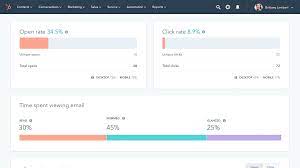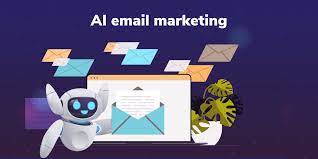HubSpot Email Drip Campaign: Boosting Engagement and Conversions
In today’s digital landscape, effective email marketing is crucial for businesses looking to engage with their audience and drive conversions. One powerful tool that can help achieve this is the HubSpot email drip campaign. This article will explore what a HubSpot email drip campaign is and how it can benefit your business.
What is a HubSpot Email Drip Campaign?
A HubSpot email drip campaign is a series of automated emails sent to a specific audience over a predetermined period of time. These emails are strategically designed to nurture leads, build relationships, and guide recipients through the customer journey. By automating the process, businesses can deliver relevant and timely content that resonates with their audience.
Benefits of a HubSpot Email Drip Campaign
Personalized Communication: One of the key advantages of using HubSpot for your email drip campaigns is the ability to create highly personalized content. With powerful segmentation options, you can send targeted messages based on specific criteria such as demographics, interests, or previous interactions. This level of personalization helps to establish trust and relevance with your audience.
Increased Engagement: By delivering a series of well-timed emails, you can keep your brand top-of-mind for your prospects or customers. This consistent communication helps to build engagement and encourages recipients to take action. Whether it’s downloading an eBook, signing up for a webinar, or making a purchase, an effective drip campaign guides recipients towards conversion.
Time-Saving Automation: With HubSpot’s automation capabilities, you can set up your email drip campaign once and let it run automatically in the background. This saves valuable time for your marketing team while ensuring that leads receive timely content at each stage of their journey.
Data-Driven Insights: A significant advantage of using HubSpot for your email campaigns is the wealth of data and insights it provides. You can track open rates, click-through rates, and conversion rates to measure the effectiveness of your campaign. This data allows you to make data-driven decisions and optimize your emails for better results.
Scalability and Flexibility: Whether you have a small business or a large enterprise, HubSpot’s email drip campaigns can scale to meet your needs. With the ability to create multiple campaigns for different segments of your audience, you can tailor your messaging and offers to specific groups, maximizing their impact.
Best Practices for a Successful HubSpot Email Drip Campaign
To make the most of your HubSpot email drip campaign, consider these best practices:
Segment Your Audience: Take advantage of HubSpot’s segmentation options to create targeted campaigns that resonate with specific groups within your audience.
Craft Compelling Content: Ensure that each email in your drip campaign provides value and engages recipients. Use persuasive copywriting techniques and include relevant visuals or multimedia content where appropriate.
Test and Optimize: Continuously test different elements of your emails such as subject lines, CTAs, or sending times to identify what resonates best with your audience. Use A/B testing to refine your approach and improve performance over time.
Monitor Performance: Regularly review the performance metrics provided by HubSpot to assess the effectiveness of your campaign. Identify areas for improvement and make data-driven adjustments accordingly.
In conclusion, a HubSpot email drip campaign is a powerful tool that enables businesses to deliver personalized, timely content to their audience at scale. By leveraging automation and personalization features, you can nurture leads, increase engagement, and drive conversions effectively. With careful planning, testing, and optimization, a well-executed HubSpot email drip campaign can be a game-changer for your business’s marketing efforts.
Frequently Asked Questions: HubSpot Email Drip Campaigns
- How do I create a HubSpot email drip campaign?
- What are the best practices for setting up a HubSpot email drip campaign?
- How do I measure the success of my HubSpot email drip campaign?
- What are the benefits of using HubSpot for an email drip campaign?
- What types of content should I include in my HubSpot email drip campaigns?
- How can I optimize my HubSpot email drip campaigns to get better results?
How do I create a HubSpot email drip campaign?
Creating a HubSpot email drip campaign is a straightforward process. Here’s a step-by-step guide to help you get started:
- Define your campaign goals: Before diving into the technicalities, clearly define the objectives of your email drip campaign. Determine what action or conversion you want to drive and how the campaign will help you achieve that.
- Identify your target audience: Segment your contact database based on relevant criteria such as demographics, interests, or previous interactions. This will allow you to send personalized and relevant content to each group.
- Plan your email sequence: Determine the number of emails in your drip campaign and their timing. Consider the customer journey and map out how each email will guide recipients towards the desired action or conversion.
- Craft compelling content: Write engaging subject lines, compelling copy, and include relevant visuals or multimedia elements in your emails. Tailor the content to each stage of the customer journey and make it valuable for recipients.
- Set up automation in HubSpot: In HubSpot, navigate to the “Marketing” tab and select “Email” from the dropdown menu. Click on “Create” and choose “Email Sequence.” Give your sequence a name and set its properties (e.g., sender name, reply-to address).
- Design your emails: Use HubSpot’s drag-and-drop editor to design visually appealing emails that align with your brand identity. Customize templates or create new ones from scratch using various design elements available.
- Set up triggers and delays: Determine when each email should be sent based on triggers such as form submissions, specific dates, or actions taken by contacts. Configure delays between emails to ensure appropriate timing.
- Personalize your emails: Utilize personalization tokens within HubSpot to dynamically insert contact-specific information like names or company details into your emails, making them more personalized.
- Test and preview: Before activating your campaign, thoroughly test each email in different email clients and devices. Preview how they will appear to recipients and make any necessary adjustments.
- Activate and monitor: Once you are satisfied with your email drip campaign, activate it in HubSpot. Monitor its performance using HubSpot’s analytics tools, track key metrics like open rates, click-through rates, and conversions. Make data-driven optimizations as needed.
Remember, successful email drip campaigns require continuous monitoring and optimization. Regularly review the campaign’s performance, test different elements, and make adjustments to improve results over time.
By following these steps and leveraging the features provided by HubSpot, you can create effective email drip campaigns that engage your audience and drive desired actions or conversions.
What are the best practices for setting up a HubSpot email drip campaign?
Setting up a HubSpot email drip campaign requires careful planning and execution. To ensure its success, here are some best practices to follow:
- Define Your Goals: Clearly define the objectives of your email drip campaign. Are you aiming to nurture leads, onboard new customers, or re-engage inactive subscribers? Having a clear goal in mind will help you structure your campaign effectively.
- Segment Your Audience: Take advantage of HubSpot’s segmentation capabilities to divide your audience into relevant groups. This allows you to tailor your messaging and content to specific segments, increasing their relevance and effectiveness.
- Map Out the Customer Journey: Understand the different stages of your customer journey and identify the content that aligns with each stage. Determine what information or offers are most valuable at each point and create a series of emails that guide recipients through the journey.
- Craft Engaging Content: Each email in your drip campaign should provide value and engage recipients. Use persuasive copywriting techniques, compelling subject lines, and include relevant visuals or multimedia content where appropriate.
- Establish an Email Cadence: Determine the frequency and timing of your emails based on your audience’s preferences and behavior. Avoid overwhelming them with too many emails too quickly, as this can lead to unsubscribes or disengagement.
- Personalize Your Emails: Leverage HubSpot’s personalization features to create customized experiences for each recipient. Address them by name, reference their past interactions or purchases, and provide tailored recommendations based on their interests.
- Test and Optimize: Continuously test different elements of your emails such as subject lines, CTAs, email design, or sending times to identify what resonates best with your audience. Use A/B testing to compare variations and make data-driven decisions for optimization.
- Monitor Performance Metrics: Regularly review performance metrics provided by HubSpot such as open rates, click-through rates, conversion rates, and engagement metrics like time spent on emails or website visits. Analyze this data to understand what’s working and make necessary adjustments.
- Automate Where Possible: Leverage HubSpot’s automation capabilities to streamline your email drip campaign. Set up triggers and workflows that automatically send emails based on specific actions or time intervals, saving you time and ensuring timely delivery.
- Continuously Improve: Keep a pulse on the performance of your email drip campaign and be open to making changes based on insights gained. Stay up-to-date with industry best practices, trends, and customer feedback to refine your approach over time.
By following these best practices, you can set up a successful HubSpot email drip campaign that effectively engages your audience, nurtures leads, and drives conversions for your business.
How do I measure the success of my HubSpot email drip campaign?
Measuring the success of your HubSpot email drip campaign is crucial to understanding its effectiveness and making data-driven improvements. Here are some key metrics and methods you can use to measure the success of your campaign:
- Open Rate: The open rate indicates the percentage of recipients who opened your emails. A higher open rate generally suggests that your subject lines and sender name are compelling and enticing enough for recipients to open the emails.
- Click-Through Rate (CTR): The CTR measures the percentage of recipients who clicked on a link within your email. It indicates how engaging and relevant your content is, as well as how effective your call-to-action (CTA) is in driving clicks.
- Conversion Rate: The conversion rate measures the percentage of recipients who completed a desired action, such as making a purchase, signing up for a webinar, or downloading an eBook. This metric directly reflects the effectiveness of your drip campaign in driving conversions.
- Bounce Rate: The bounce rate indicates the percentage of emails that were not delivered successfully to recipients’ inboxes. A high bounce rate could indicate issues with email deliverability or outdated contact information.
- Unsubscribe Rate: The unsubscribe rate shows the percentage of recipients who opted out of receiving further emails from you after receiving one or more emails from your drip campaign. Monitoring this metric helps you understand if there are any issues with your content or frequency that may be causing people to unsubscribe.
- Revenue Generated: If your goal is to drive sales or revenue through your drip campaign, tracking the revenue generated directly attributed to the campaign can provide valuable insights into its impact on your bottom line.
- Engagement Metrics: HubSpot provides various engagement metrics such as time spent on email, forwards, social shares, and replies. These metrics help gauge how well recipients are engaging with and responding to your emails.
To measure these metrics effectively, utilize HubSpot’s analytics tools and reporting features. Set up tracking for each email in your drip campaign, and regularly review the performance data provided by HubSpot. Analyze the trends, identify areas for improvement, and make data-driven adjustments to optimize your campaign.
Remember, it’s important to establish clear goals and benchmarks before launching your campaign so that you can accurately measure success against your objectives. Regularly monitor and compare these metrics over time to track the progress and effectiveness of your HubSpot email drip campaign.
What are the benefits of using HubSpot for an email drip campaign?
Using HubSpot for an email drip campaign offers several benefits that can greatly enhance your marketing efforts. Here are some key advantages:
- Personalized Communication: HubSpot provides robust segmentation options, allowing you to send targeted and personalized messages based on specific criteria such as demographics, interests, or previous interactions. This level of personalization helps establish trust and relevance with your audience.
- Increased Engagement: By delivering a series of well-timed emails, a HubSpot email drip campaign keeps your brand top-of-mind for prospects or customers. This consistent communication helps build engagement and encourages recipients to take action, whether it’s downloading an eBook, signing up for a webinar, or making a purchase.
- Time-Saving Automation: HubSpot’s automation capabilities enable you to set up your email drip campaign once and let it run automatically in the background. This saves valuable time for your marketing team while ensuring that leads receive timely content at each stage of their journey.
- Data-Driven Insights: HubSpot provides comprehensive data and insights on the performance of your email campaigns. You can track open rates, click-through rates, and conversion rates to measure effectiveness and make data-driven decisions to optimize your emails for better results.
- Scalability and Flexibility: Whether you have a small business or a large enterprise, HubSpot’s email drip campaigns can scale to meet your needs. You can create multiple campaigns for different segments of your audience, tailoring messaging and offers to specific groups for maximum impact.
- Integration with CRM: HubSpot integrates seamlessly with its CRM platform, allowing you to track and manage leads throughout their customer journey. This integration ensures that your email drip campaigns align with other marketing activities and sales efforts.
- Workflow Automation: In addition to email automation, HubSpot offers workflow automation capabilities that allow you to trigger actions based on customer behavior or specific events. This enables you to create more sophisticated drip campaigns that adapt and respond to individual customer actions.
- Collaboration and Reporting: HubSpot provides a collaborative environment where your marketing team can work together, share insights, and track progress. The platform also offers comprehensive reporting features, allowing you to monitor the performance of your email drip campaigns and make informed decisions based on data.
By leveraging the benefits of HubSpot for your email drip campaigns, you can streamline your marketing efforts, deliver personalized content at scale, and drive better engagement and conversions.
What types of content should I include in my HubSpot email drip campaigns?
When creating content for your HubSpot email drip campaigns, it’s important to provide value and engage your audience at each stage of their customer journey. Here are some types of content you can include:
- Welcome Emails: Start your drip campaign with a warm welcome email that introduces your brand, sets expectations, and provides helpful resources or next steps.
- Educational Content: Share informative content such as blog posts, ebooks, or whitepapers that address pain points or provide solutions relevant to your audience’s interests. This helps establish your expertise and builds trust.
- Case Studies/Testimonials: Showcase real-life examples of how your products or services have helped customers overcome challenges or achieve success. This social proof can be highly persuasive in nurturing leads towards conversion.
- Product/Service Updates: Keep your audience informed about new features, updates, or offerings related to your products or services. This helps maintain engagement and encourages repeat business.
- Exclusive Offers/Promotions: Provide exclusive discounts, special offers, or promotions to incentivize recipients to take action and make a purchase. Limited-time offers create a sense of urgency and drive conversions.
- Interactive Content: Incorporate interactive elements such as quizzes, surveys, polls, or contests to engage your audience and gather valuable insights about their preferences or needs.
- Customer Success Stories: Share success stories from satisfied customers to demonstrate the value of your offerings and inspire confidence in potential buyers.
- Re-engagement Emails: If subscribers haven’t engaged with previous emails for some time, send re-engagement emails with personalized offers or reminders to encourage them to re-engage with your brand.
- Upselling/Cross-selling Opportunities: For existing customers, offer complementary products or upgrade options that enhance their experience with your brand.
- Social Media Highlights: Include snippets of engaging social media content such as user-generated posts, testimonials, or behind-the-scenes glimpses to encourage recipients to connect with your brand on social platforms.
Remember to customize the content based on the specific needs and preferences of your target audience. Regularly analyze performance metrics and adjust your content strategy accordingly to optimize engagement and conversions.
How can I optimize my HubSpot email drip campaigns to get better results?
Optimizing your HubSpot email drip campaigns can significantly improve their effectiveness and drive better results. Here are some tips to help you optimize your campaigns:
- Define Clear Goals: Clearly define the goals of your email drip campaign. Are you aiming to generate leads, nurture existing leads, or re-engage inactive customers? Having a clear objective will help you design your campaign and measure its success accurately.
- Segment Your Audience: Take advantage of HubSpot’s segmentation capabilities to divide your audience into smaller, more targeted groups. By sending tailored messages to specific segments based on demographics, interests, or previous interactions, you can increase relevance and engagement.
- Craft Compelling Subject Lines: The subject line is the first thing recipients see in their inbox. Make it compelling and enticing to encourage higher open rates. Experiment with different subject lines and use A/B testing to determine which ones resonate best with your audience.
- Personalize Your Content: Use personalization tokens in your emails to address recipients by their name or include other relevant information from their profile. Personalization helps create a connection with your audience and increases engagement rates.
- Focus on Valuable Content: Ensure that each email in your drip campaign provides value to the recipient. Offer useful information, tips, or exclusive content that aligns with their interests or pain points. Valuable content builds trust and keeps recipients engaged throughout the campaign.
- Optimize Email Design: Pay attention to the design of your emails. Use a clean layout, visually appealing images, and clear calls-to-action (CTAs). Make sure your emails are mobile-responsive since many people now access emails on their smartphones.
- Test Different Variables: Continuously test different elements of your emails such as subject lines, CTAs, email copy length, visuals, or sending times. A/B testing allows you to compare two versions of an email and determine which performs better for specific segments of your audience.
- Monitor and Analyze Metrics: Regularly monitor the performance metrics provided by HubSpot, such as open rates, click-through rates, and conversion rates. Analyze the data to identify trends, patterns, and areas for improvement. Use these insights to make data-driven decisions and optimize your campaigns accordingly.
- Maintain a Consistent Schedule: Plan your email drip campaign schedule carefully to maintain a consistent presence in your audience’s inbox without overwhelming them. Find the right balance between staying top-of-mind and avoiding email fatigue.
- Continuously Improve: Optimization is an ongoing process. Pay attention to feedback from your audience, learn from past campaigns, and adapt your strategies accordingly. Keep experimenting with new ideas and tactics to continually improve the performance of your email drip campaigns.
By implementing these optimization techniques, you can enhance the effectiveness of your HubSpot email drip campaigns and achieve better results in engaging your audience and driving conversions.




